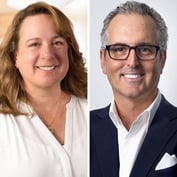NEW YORK (HedgeWorld.com)–There are sector bubbles in hedge funds, said Barton Biggs, speaking at the endowment management forum of the National Association of College and University Business Officers.
Mr. Biggs, who manages the US$2 billion global macro fund Traxis Partners LLC and was previously Morgan Stanley’s chief investment officer, is the man who introduced the notion of a hedge fund bubble to the public. He warned of one in June 2001, when he was still at Morgan Stanley.
In 2003, after he left the bank and launched Traxis, he downplayed the hazard, arguing that asset inflows had slowed and many weak funds already had disappeared. Now he sounds concerned about specific strategies and markets rather than the entire industry.
One example he gave was convertible bond arbitrage, where high returns attracted a lot of money and new hedge funds. Think of the alpha in a sector as a pool, suggested Mr. Biggs. With more horses drinking from the pool, returns go down.
In his view, this can happen in any sector and his own corner, global macro, also is suffering from excessive activity. Too many people are doing macro and because of that, “moves that served us well in the past did badly last year,” he said. Losses at Traxis, partly caused by a wrong bet on oil, hit the news in 2004.
In the long/short equity sector, he sees short selling as too busy. “The short side is so crowded that non-fundamental factors cause big moves,” he said.
Goldilocks








 February 01, 2005 at 07:00 PM
February 01, 2005 at 07:00 PM










